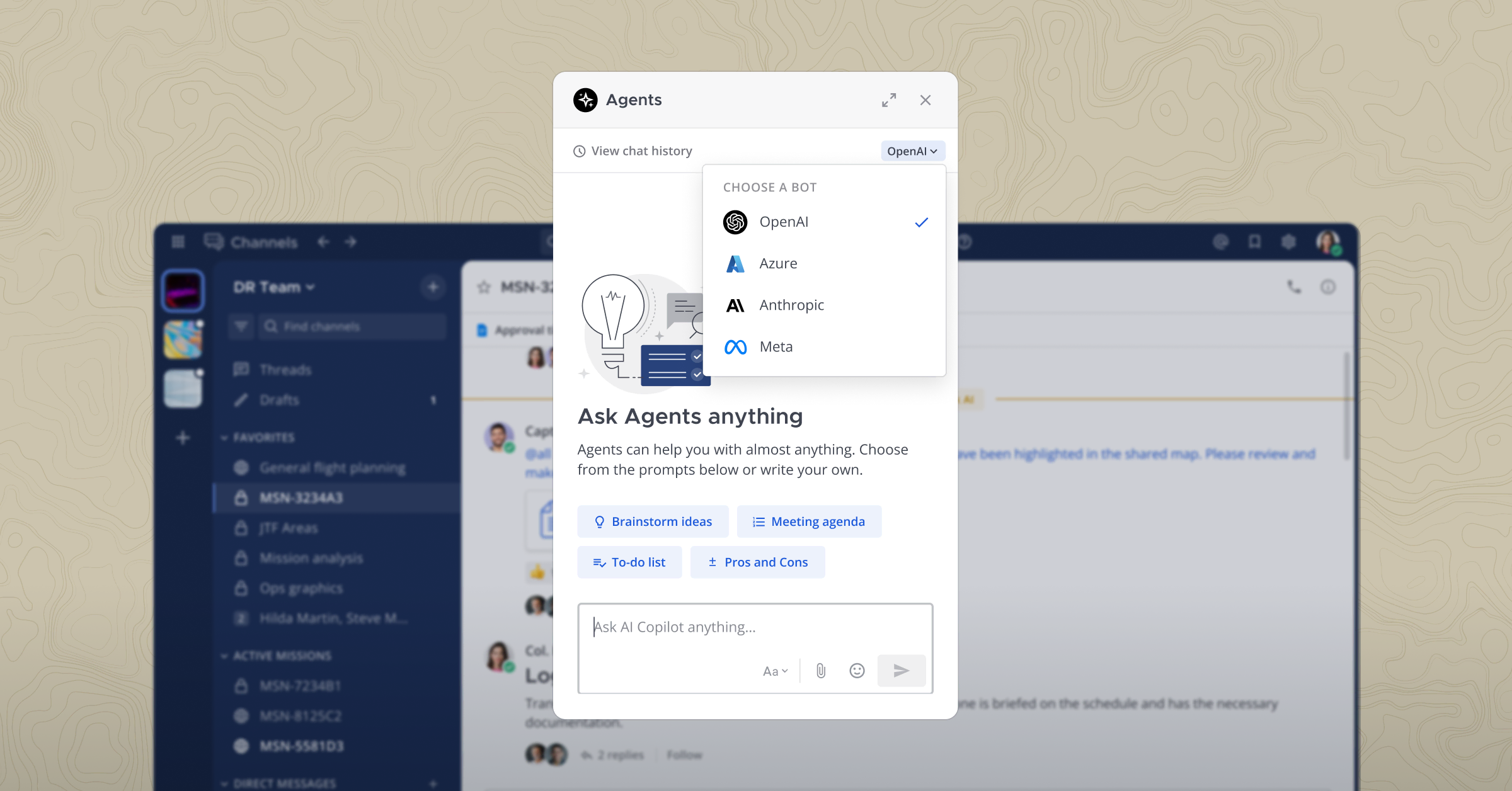
How Our Culture of High-Impact Openness at Mattermost Drives Results
As an open source organization, openness is part of our DNA here at Mattermost. But that openness is about more than just opening up our source code — it’s a core part of our culture and the way we do business. I’d like to share a bit more about why we’ve adopted this culture of high-impact openness and how we practice it every day across the various communication and collaboration channels that we use.
A Culture of Openness is a Competitive Advantage
You might be surprised to hear that we consider our openness a competitive advantage, but it’s true — it lets us do things that other companies can’t for our customers, our staff members, and our partners. Being able to do a Google search and discover almost anything about Mattermost is such a powerful tool, as is being able to dive deeper into that information for yourself.
First and foremost, our openness across our source code and development processes help us connect with our users. Developers prefer transparency. They want to know what’s under the hood of the tools they rely on, and they want to know what’s coming next.
Our openness is also an advantage in recruiting new members of the team. We’ve found that the best candidates will self-select into an open workplace over and over again, and a handbook that is publicly discoverable and searchable is an essential component in our hiring process.
For our community, our openness makes it easy to contribute, understand our workflow, and ultimately impact our code. We’ve been able to bring over 4,000 contributors into our community without very much direct effort by putting all our contribution and code practices information online.
Finally, our openness makes it easier for our partners to collaborate with us. Everything they need to know – how to become a partner to what our preferred processes for working together are – is open and available for anyone to see.
What is High-Impact Openness, and Why Does it Matter?
In the early days of Mattermost, when most of our team worked on open source chat features, there was a concept that certain permission settings inside a sign-up required workspace was “open”, but today that mode of communication today is considered less open relative to the impact web-visible content has.
When there’s important information exchanged—like how to debug an issue, or what an acronym means — it is 10-100 times better (sometimes 1,000 to 10,000 even) to have that information publicly available versus in a sign-up required system.
But while we’re always striving towards “default open,” completely open access to information isn’t always the right choice. Customer data and other confidential information should be private, of course. And some conversations don’t need to be part of a public channel. So, how do we choose how open to be with a given piece of information? That’s where the concept of being “high-impact” comes in.
When we say “high-impact” openness, we mean that we make decisions about sharing information that will have the greatest benefit to the largest group and create the most effective flow of information. We challenge every team member at Mattermost to ask themselves who the right audience is for everything they produce, and what the right channel is for sharing that information.
Let’s walk through our options, from most open to least open, and how we determine which is appropriate for a given piece of information.
Most Open: Web-visible systems
In the age of the internet, the “most open” communication has to be web-visible. If you can’t find the information through a web search, it’s not really open. The following are the most open systems for communication, which we try to use as our default channels wherever possible.
Web-visible, Open Dialogue Systems
Information that’s dynamic and collaborative
The most open option we have is web-visible, open dialogue systems. These are places where information is freely accessible for anyone who wants to find it, and anyone can contribute to the conversation.
The Mattermost forum is a great example of an open dialogue system. If you’re troubleshooting a problem you’ve been having with the platform, you can ask questions and get answers, whether they’re from us, or from our community. And when someone finds a solution, they can mark the “solution” button and make it discoverable for anyone else who searches for it on the web. This lets us move really quickly when it comes to supporting our users, both for commonly asked questions and things that might be outliers.
Another example of this practice is open sourcing our internal build tools. They aren’t necessarily usable by other teams, but we publish them anyway because you never know when something open is going to help you.
Public listservs with a web-visible archive also fall into this category, since all the conversations are open for public viewing.
Web-visible; Contributions Welcome
Information that’s mostly static, but underlying processes are iterative
In the next category, we have web-visible pages that welcome contributions. These are pages that are open for feedback and contributions. Our handbook, our documentation, and even some of our Boards are all things that we’d love for people to engage with, ask questions about, and suggest changes or additions.
By making these pages open, we let our team spend less time manually sharing the same information over and over again, while empowering employees, partners, users, and other members of the community to find the information they need as easily as possible. The more open we are, the easier it is for everyone to work together.
Our company handbook is an example of this kind of high-impact content in practice. The goal of our handbook is to provide a source of clarity about our processes for both employees and community members. While most of the information in our handbook comes from the Mattermost team, anyone can submit a pull request if they’d like to help us improve it.
Web-Visible, Published Pages
Information that’s important to share but isn’t yet open to external feedback
Web-visible published pages are for information where we’ve got what we want to say dialed in, and we aren’t looking for any feedback, but there’s a benefit to having that information publicly discoverable.
The Mattermost acronym guide is a great example of this. While this guide to the acronyms we use internally at Mattermost is mainly relevant to our team members, we decided to make them part of a public Board. Anyone who might encounter these acronyms – perhaps a candidate interviewing with the team or a community member sitting in on an open meeting – will be able to search for and understand these terms easily.
Least Open: Gated systems
Here we describe the least open systems for collaboration from a high-impact context. These are systems that we try to use sparingly, and only when necessary.
Sign Up-Required Information; All are Welcome
Information relevant to a smaller audience
While we strive to make as much information publicly available as possible, there are times when publishing on the Internet just doesn’t make as much sense. Maybe that information is ephemeral, and by the time we published it somewhere permanently, it would already be out of date. Or maybe it’s only relevant to people already using Mattermost. In these cases, we make the information available to everyone who has signed into our Community Server — which is free and open to anyone interested in joining!
Here’s where the concept of high-impact openness really comes into our decision-making process. While that call for testing help isn’t as visible as it would be on an even more open channel, it will have a bigger impact in a place that’s focused on reaching a highly engaged community.
Say we’re merging some new, experimental features onto the Community Server, and we need some help testing them. With a single message, we can reach the 13,000 registered users in our community – people who we know are already Mattermost users and are actively interested in helping us improve the platform.
This form of communication is roughly the equivalent of an email listserv that doesn’t have a web-visible archive or interface—only those who have signed up have the information.
Sign Up-Required Information; Staff Only
Sensitive information with a targeted audience
Now we get into the least open communication channels: company chat and private chat. We have a staff workspace for Mattermost employees, and that’s a great place to share information that might be too sensitive to share publicly. If we want to share customer feedback that might include people’s names or specifics of other technologies that we don’t want to share anywhere else, that company chat is the right place for it.
It’s important to note that we try to default to group channels even within our company chat; this lets other employees find information efficiently without having to hunt down answers to frequently asked questions.
Which finally leaves private messages. Private messages are obviously the least high-impact for surfacing information to a large audience but might be necessary for our day-to-day work. Letting someone know you’re running late, giving them a quick update on an earlier conversation — these aren’t things that are important or even beneficial to have in a public channel.
This form of communication is roughly equivalent to staff-only email distribution lists.
The Purpose of the Information Drives the Channel You Use
When it comes down to it, we try to make our choices based on how we’re thinking about the impact we want to have.
When I think about collaboration, I always think about this quote from the French writer Antoine de Saint-Exupéry:
“If you want to build a ship, don’t drum up the men to gather wood, divide the work, and give orders. Instead, teach them to yearn for the vast and endless sea.”
If you can get everyone aligned around the same goals and mission, then the benefits of your actions — or in this case, your openness — become much easier for everyone to see and act on.
Openness is a Skill to be Celebrated, Encouraged, and Taught
Remember that openness is a skill, just like public speaking, playing the piano, or hitting a tennis ball. It requires intention, courage, and experience. It’s something that people have to work on, and not everyone has the same skill in being open. And that’s okay! Some people have worked their entire careers in open source. Some people are a little newer. But everyone is exactly where they need to be.
So it’s important to celebrate, support, and teach openness as a company, team, and individuals. When we talk about openness at Mattermost, I ask our team to be a guide, not a critic.
When we see openness, let’s give it a thumbs up. And instead of calling someone out when they’re not as open as they could be, let’s use that as an opportunity to provide suggestions and examples.
Thank you so much for thinking about high-impact openness. And I’m looking forward to seeing you on the internet.




